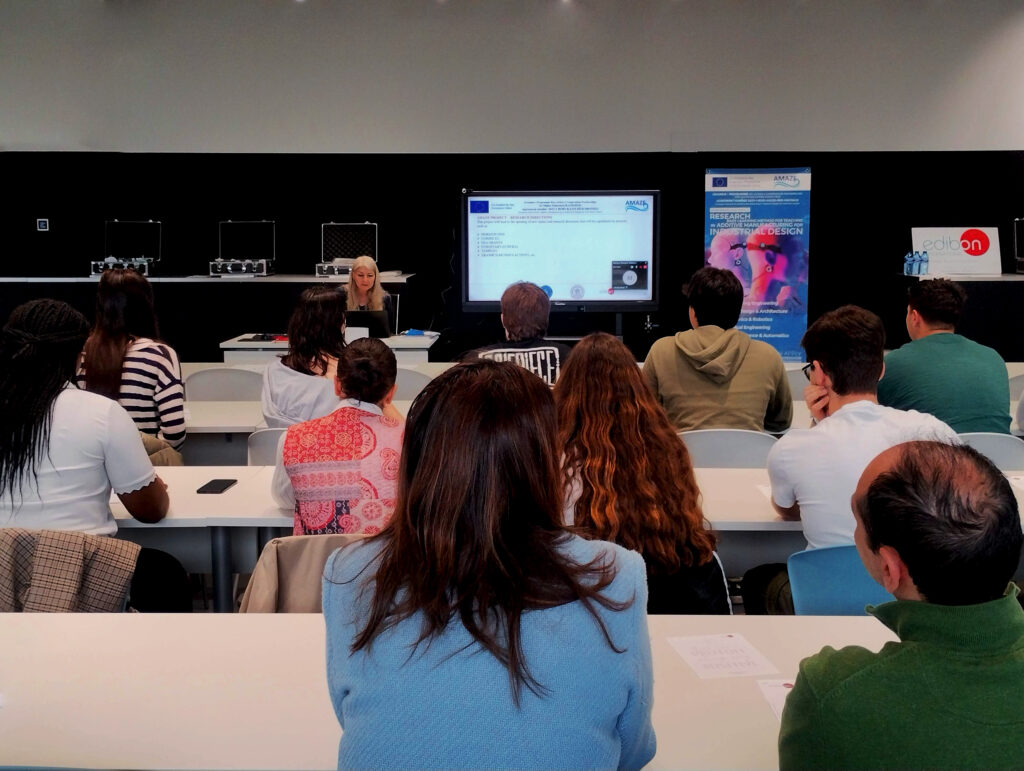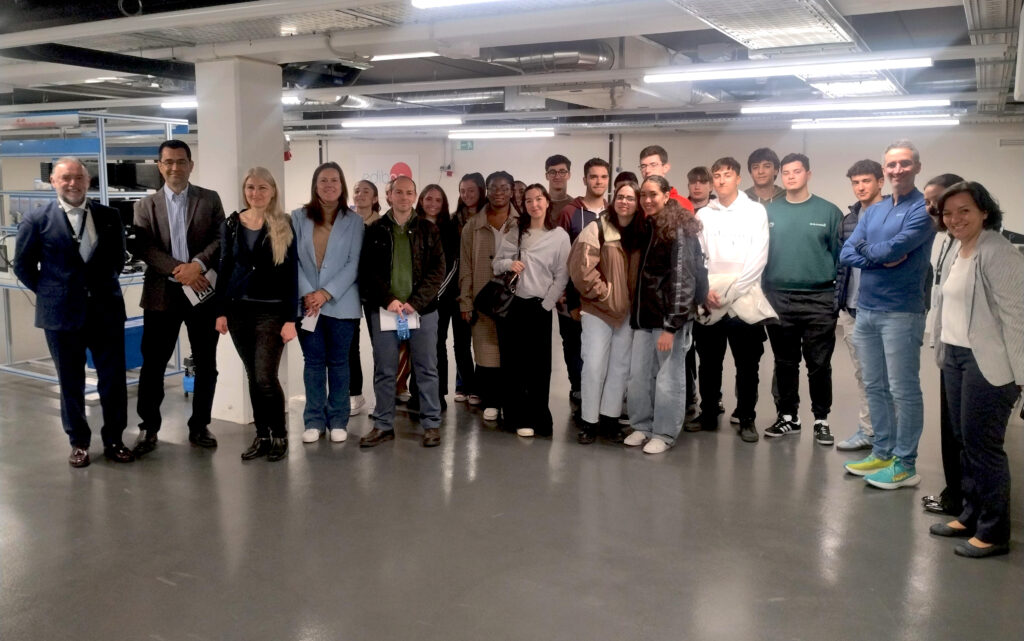In the ever-evolving technological landscape, education must keep pace with the rapid advancements that define our modern world. The emergence of Industry 5.0 has magnified the demand for innovative educational solutions, especially in technical and practical fields. Projects like AMAZE are at the forefront of this transformation, showcasing how advanced tools and technologies can make education more practical, engaging, and aligned with real-world applications.
Meet Dr. Băilă Diana-Irine
Dr. Băilă Diana-Irinel is a distinguished researcher and academic with extensive expertise in industrial engineering. As an Associate Professor at the National University of Science and Technology Politehnica Bucharest, she has made significant contributions to the fields of additive manufacturing, biocompatible materials, and sustainable development. Being Habil.Assoc.Prof.Dr.Eng. in Industrial Engineering, and with over 15 years of teaching and research experience, Dr. Băilă is a pioneer in integrating cutting-edge technologies into education. Her leadership in projects like AMAZE and her active involvement in Erasmus+ initiatives underscore her dedication to transforming technical education. She has published over 60 high-impact articles, authored several books on manufacturing technologies, and coordinated multiple international research projects. Dr. Băilă’s work bridges academia and industry, preparing the next generation of engineers and innovators.

Professor insights: An exclusive interview
To delve deeper into the challenges and innovations in technical education, we spoke with Dr. Băilă Diana-Irinel, who plays a pivotal role in the AMAZE project. Her expertise and forward-thinking perspective illuminate the path forward for modern education.
Q: What challenges do professors face when teaching technical and practical concepts in the classroom?
Dr. Băilă: One of the greatest challenges in teaching technical courses is bridging the gap between theory and practice, especially when dealing with complex engineering concepts. Students often encounter a large number of formulas and theories that can feel abstract without immediate practical application. Solutions such as using equipment combined with Augmented Reality (AR) allow for real-time visualization of complex phenomena and a better understanding of how formulas apply in practical scenarios.
Q: Do you think incorporating Augmented Reality (AR) to equipment like this can help bridge the gap between theory and practice? What improvements could be made to industrial design education, for example?
Dr. Bąilă: Absolutely. For example, in the AMAZE project that we developed in collaboration with EDIBON, the combination of Augmented Reality (AR) platforms with 3D printers and technical equipment has allowed students to design new parts using CAD/CAM/CAE software, visually and interactively simulate the manufacturing process, evaluate equipment performance, test new prototypes, and analyze mechanical systems. This provides students with a comprehensive understanding in an engaging and highly educational way.
For instance, with AR, students have been able to explore the internal design of a mechanical part, understand how different forces act on it, and even make real-time adjustments to optimize its performance. This transforms education by allowing students not only to learn formulas but also to see their practical application, acquiring knowledge in a highly interactive and effective way.
Q: What specific skills are students developing through continuous, high-quality technical and practical training?
Dr. Băilă: With the use of Augmented Reality (AR) and technical equipment, students acquire essential practical skills that complement their theoretical learning. Through real-world experience, we have observed how students have been able to:
- Create efficient designs and gain a deep understanding of the internal workings of machines.
- Simulate and analyze mechanical systems in detail, improving their ability to assess different scenarios, enhancing problem-solving and analytical skills.
- Improve decision-making by conducting tests, basing their choices on accurate data analysis, and evaluating solutions in virtual environments before applying them in real-world scenarios.
This approach reinforces the understanding of how theoretical formulas apply to real-world contexts, a key skill for the future of engineers.
Q: How do you think projects like AMAZE are transforming technical education?
Dr. Bąilă: Projects like AMAZE are transforming technical education by introducing advanced technologies that directly connect theory with practice. For instance, in mechanics, AR platforms allow students to simulate the behavior of mechanical components under different conditions and analyze how they align with the formulas and principles learned in class. This not only reinforces their understanding but also provides an opportunity to explore complex problems without the risks associated with using real machinery. Additionally, by combining AR with additive manufacturing tools and technical equipment, students can design, print, and test physical components, creating a comprehensive and meaningful learning cycle.
Q: What advantages do you see in hands-on learning compared to traditional methods?
Dr. Bąilă: Technologies like augmented reality (AR) make learning far more interactive and effective compared to traditional methods. In mechanics, for instance, students can use AR to observe how complex systems function in real time, helping them visually and practically understand how the formulas and theories they learn in the classroom impact the design and operation of components. This immersive experience enhances knowledge retention and improves their technical skills. Furthermore, the use of virtual platforms and simulations enables students to practice with machinery and systems from anywhere, removing physical barriers and simplifying the learning process.
AMAZE: A revolution in technical education
The Erasmus+-funded AMAZE project (“European Network for Additive Manufacturing in Industrial Design for Ukrainian Context”) embodies the future of technical education. By immersing students in realistic simulations and enabling them to design and test intricate 3D models, AMAZE bridges the gap between theoretical understanding and practical application. This comprehensive approach equips students to excel in industrial, medical, and architectural manufacturing systems.

Skills for the future
Through AMAZE, students acquire an array of essential interdisciplinary skills:
- CAD/CAM/CAE Design: Developing complex and precise parts.
- Additive Manufacturing: Creating prototypes and functional designs with 3D printing.
- Reverse Engineering: Innovation and testing of equipment through the reconstruction of existing designs.
- Smart Materials Integration: Combining electronics with advanced materials.
- VR/AR Platforms: Conducting real-world simulations and testing.
These competencies not only enhance employability but also position students as leaders in technological innovation.
Transforming education, one project at a time
The success of AMAZE is evident in its tangible results: e-books, toolkits, case studies, and academic publications, all accessible on its official website. These resources are redefining technical education by making it more innovative, impactful, and future-ready.
Augmented reality, combined with specialized technical equipment, not only bridges the gap between theory and practice but also revolutionizes the way teaching and learning take place in fields like mechanics. Projects like AMAZE highlight the transformative impact of these technologies, enabling students to visualize, experiment, and apply knowledge in a hands-on manner, preparing a new generation to tackle the challenges of Industry 5.0.
Dr. Băilă Diana-Irinel contributions underscore the importance of forward-thinking professors in this transformative journey. Her leadership exemplifies how innovative tools and methodologies can revolutionize learning and equip the next generation to shape a brighter future.
Learn more about AMAZE and its groundbreaking initiatives at AMAZE 2023 Official Website.
Her areas of expertise include advanced manufacturing, additive manufacturing, sustainable development, and industrial design. With a strong academic and research background, she has actively contributed to the development and application of innovative technologies in both industrial and medical fields.
